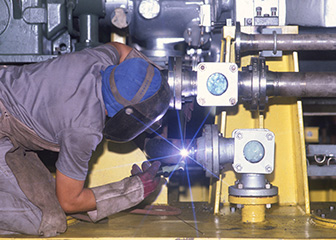Summary

| Quick Facts: Boilermakers | |
|---|---|
| 2023 Median Pay |
$71,140 per year
$34.20 per hour |
| Typical Entry-Level Education | High school diploma or equivalent |
| Work Experience in a Related Occupation | None |
| On-the-job Training | Apprenticeship |
| Number of Jobs, 2023 | 11,300 |
| Job Outlook, 2023-33 | -1% (Decline) |
| Employment Change, 2023-33 | -100 |
What Boilermakers Do
Boilermakers assemble, install, maintain, and repair boilers, closed vats, and other large vessels or containers that hold liquids and gases.
Work Environment
Boilermakers do physically demanding work. They may travel to worksites and be away from home for extended periods.
How to Become a Boilermaker
Boilermakers typically learn their trade through an apprenticeship program.
Pay
The median annual wage for boilermakers was $71,140 in May 2023.
Job Outlook
Employment of boilermakers is projected to grow 1 percent from 2023 to 2033, decline.
About 1,000 openings for boilermakers are projected each year, on average, over the decade. Many of those openings are expected to result from the need to replace workers who transfer to different occupations or exit the labor force, such as to retire.
State & Area Data
Explore resources for employment and wages by state and area for boilermakers.
Similar Occupations
Compare the job duties, education, job growth, and pay of boilermakers with similar occupations.
More Information, Including Links to O*NET
Learn more about boilermakers by visiting additional resources, including O*NET, a source on key characteristics of workers and occupations.












